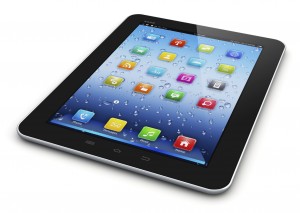 When Steve Jobs announced the launch of the iPad tablet in 2010, computer technology entered into a new era. As the first successful consumer tablet, the iPad opened up the field for other companies to continue to expand upon, improve, and alter the tablet technology. But just what is a tablet?
When Steve Jobs announced the launch of the iPad tablet in 2010, computer technology entered into a new era. As the first successful consumer tablet, the iPad opened up the field for other companies to continue to expand upon, improve, and alter the tablet technology. But just what is a tablet?
With all the different mobile devices, including all the hybrid devices, many people are left confused as to what makes a device a tablet instead of a laptop or a smart phone. With no regulation on size, shapes, or features, the definitions of this particular technology can be a bit hazy.
The most basic definition of a tablet is a computing device that has an on-screen interface but does not include a phone. It is this unique combination that differentiates a tablet from either a laptop or a smartphone.
If you were to take a look inside your tablet, you would find components that are remarkably similar to your computer, packed together in an extremely efficient way. A tablet is run through a microprocessor (also known as a central processing unit or CPU), which is a chip that holds your tablet’s computation engine. At the most basic level, your microprocessor allows your tablet to do three things:
- Mathematical operations
- Move data from one location in your device’s memory to another location
- Make decisions and follow instructions
The microprocessor on your tablet will be smaller than the one found in a regular computer in order to save space and to reduce the level of heat that is emitted.
The second thing you would find inside your tablet is a rechargeable battery. This battery is what powers your tablet and can usually run, depending on the model, from 8-10 hours before it needs to be charged.
Outside of these two basic components, there are several other things you might find inside your tablet, depending on its make and model. These components include accelerometers and gyroscopes (which gives your tablet the ability to orient itself so that it can display your graphics both horizontally and vertically), WiFi, cellular chips and antennas, Bluetooth receivers, USB docks, speakers, graphics processors, touch screen controller chip, and your camera sensors, chips, and lenses.
In our upcoming articles we’ll take a closer look at some of the different parts of the tablet, helping you to better understand this exciting technology.
